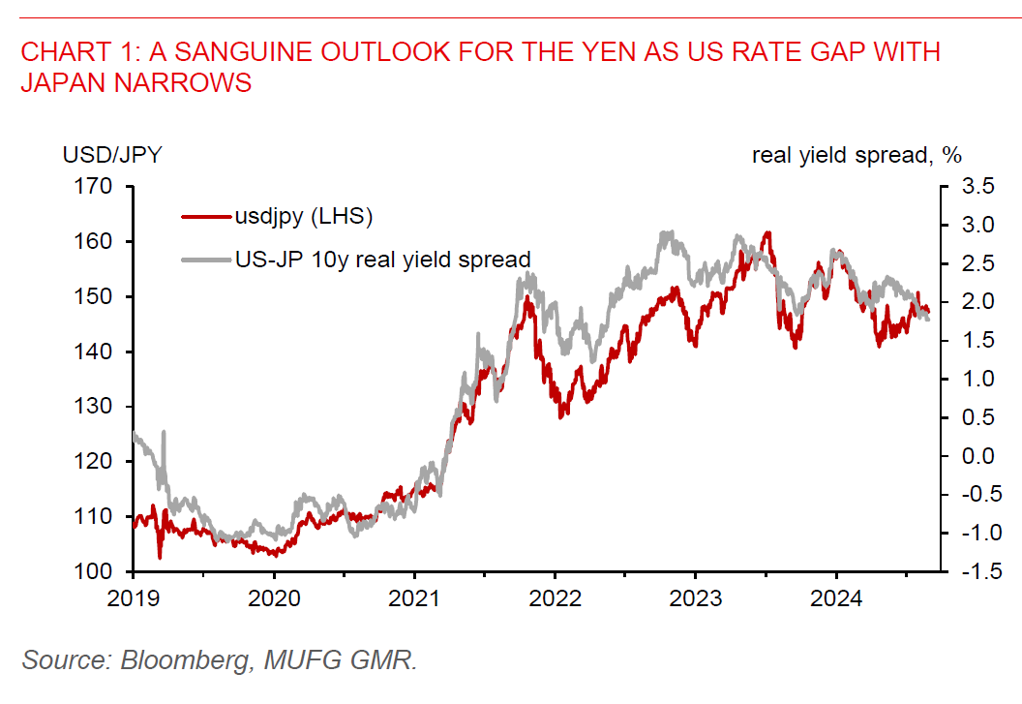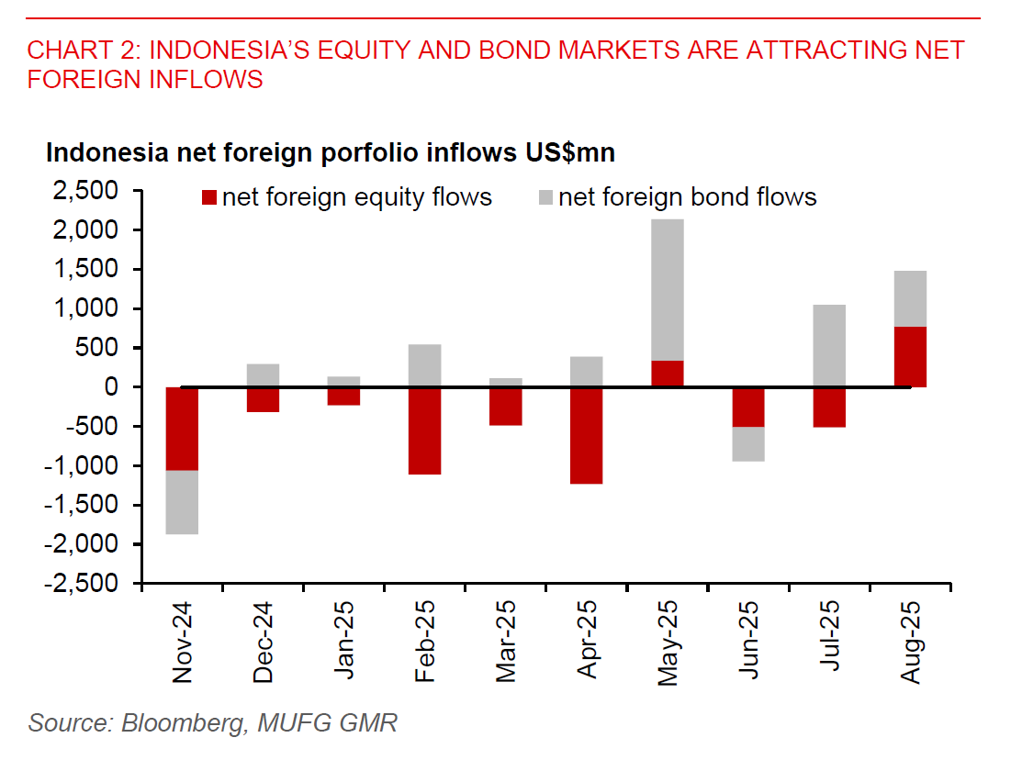Ahead Today
G3: US mortgage applications
Asia: China industrial profits, US tariff announcement on India
Market Highlights
USD/JPY fell to 147.40 yesterday, resuming its decline after a 0.6% rebound on Monday. That rebound appears to be a temporary retracement of the USD slump triggered by the Fed’s dovish policy signal last Friday. BoJ Governor Ueda has recently appeared to hint at a potential rate hike this year. He commented that a tight labour market will sustain upward pressure on wages, while wage growth is becoming broad based across large, small, and medium enterprises. This aligns with recent business survey showing improving sentiment in medium and small enterprises. Ueda’s latest comment will likely support market expectations for one 25bps BOJ rate hike before end-year. Japan’s 10-year JGB yield has risen past 1.60%, while inflation expectations have also increased. The Fed’s signal for potential rate cuts in September suggests US rate gap with Japan will narrow in the coming months, supporting yen appreciation.
Meanwhile, US policy uncertainty on trade and Fed’s independence remains a headwind for the US dollar. President Trump has announced to sack Fed Governor Lisa Cook, while threatening China with steep tariffs if China curbs rare earth exports to the US. China will send Vice Commerce Minister Li Chenggang to US to meet with officials and the business community this week, but this does not seem to be part of any formal trade negotiation session.

However, dollar weakness only modestly lifted several other Asian currencies, with CNH, KRW, and THB each gaining 0.4% since Powell’s speech last Friday, while SGD rose 0.3%. High-yielding currencies like the INR (-0.5%) and PHP (-0.2%) have underperformed, though IDR has remained steady. In particular, India may have to brace for additional 25% US tariffs, which would bring total tariffs to 50%. For Indonesia, while Bank Indonesia’s 25bps rate cut in August has somewhat undercut the rupiah’s appeal, net foreign inflows into local bond and equity markets will help stabilize the currency. With less than 40% of the government budget being disbursed in H1, there will be more fiscal support for the Indonesian economy in H2.

